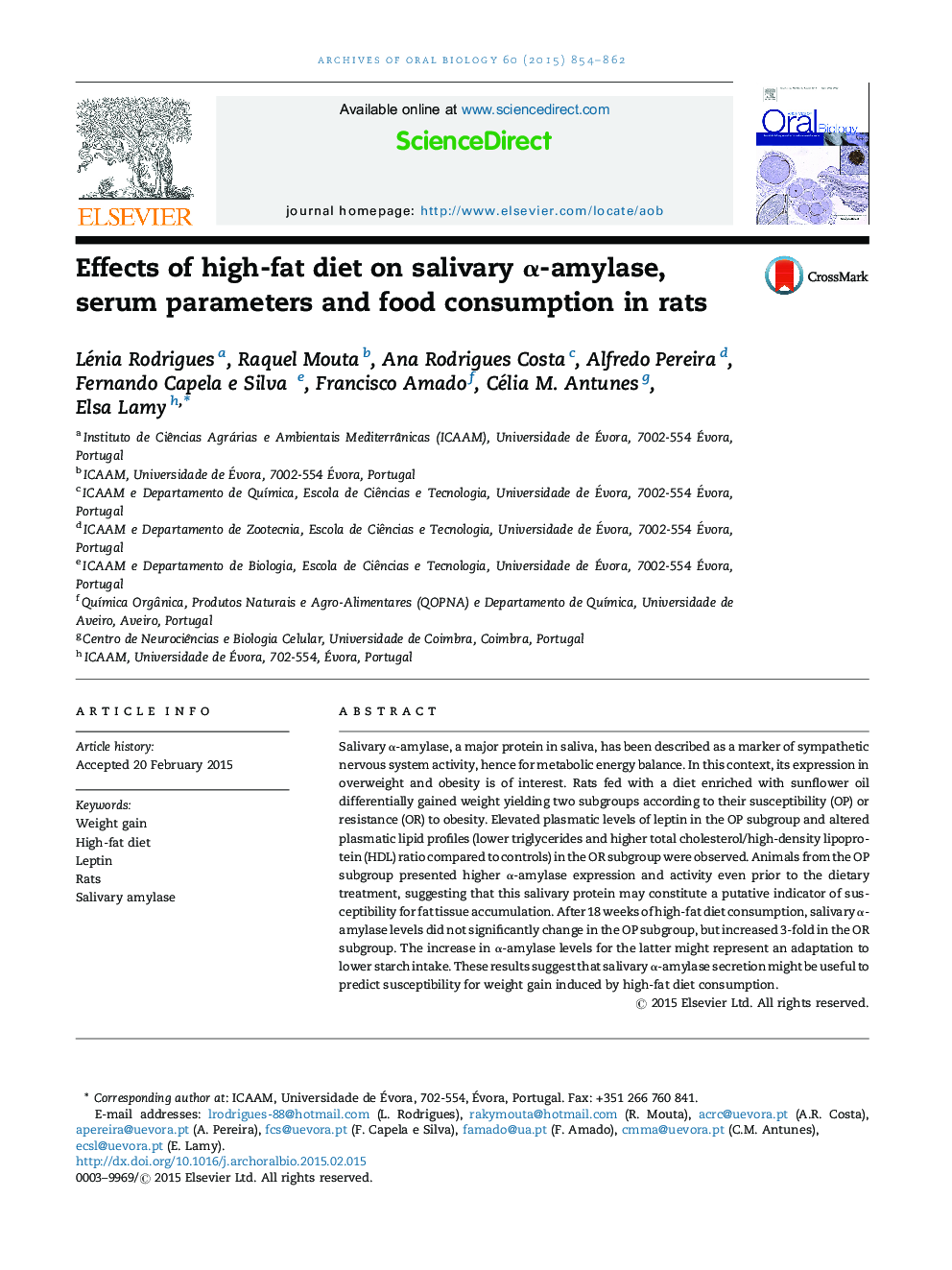| Article ID | Journal | Published Year | Pages | File Type |
|---|---|---|---|---|
| 6050921 | Archives of Oral Biology | 2015 | 9 Pages |
â¢Rats with different susceptibilities for high-fat diet induced obesity were studied.â¢Changes in metabolic parameters were assessed.â¢Obese prone animals already had higher salivary α-amylase content before treatment.â¢Salivary α-amylase presents potential for understanding events related to obesity.
Salivary α-amylase, a major protein in saliva, has been described as a marker of sympathetic nervous system activity, hence for metabolic energy balance. In this context, its expression in overweight and obesity is of interest. Rats fed with a diet enriched with sunflower oil differentially gained weight yielding two subgroups according to their susceptibility (OP) or resistance (OR) to obesity. Elevated plasmatic levels of leptin in the OP subgroup and altered plasmatic lipid profiles (lower triglycerides and higher total cholesterol/high-density lipoprotein (HDL) ratio compared to controls) in the OR subgroup were observed. Animals from the OP subgroup presented higher α-amylase expression and activity even prior to the dietary treatment, suggesting that this salivary protein may constitute a putative indicator of susceptibility for fat tissue accumulation. After 18 weeks of high-fat diet consumption, salivary α-amylase levels did not significantly change in the OP subgroup, but increased 3-fold in the OR subgroup. The increase in α-amylase levels for the latter might represent an adaptation to lower starch intake. These results suggest that salivary α-amylase secretion might be useful to predict susceptibility for weight gain induced by high-fat diet consumption.
